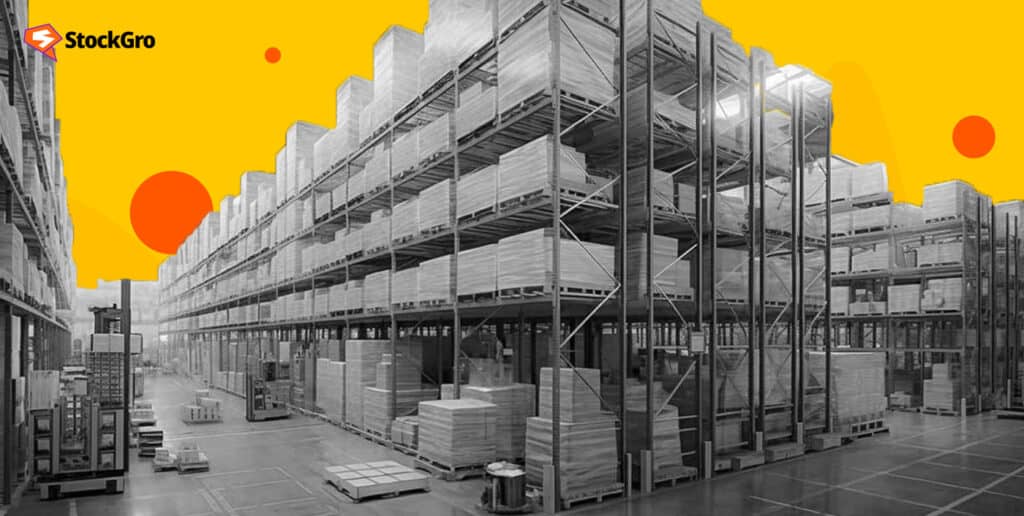
The warehousing and logistics industry in India is a crucial part of the country’s economy. As the foundation of trade and commerce, this industry is highly essential for the smooth running of other industries.
Contribution to GDP and job creation potential both highlight the sector’s importance. Growing international trade and India’s booming e-commerce sector bode well for the country’s warehousing and logistics sector.
This article dives into the complexities of this ever-changing industry, looking at its present state, how recent global events have affected it, and what the future holds.
The current state of the industry
The warehouse and logistics sector is vital to the Indian economy. With a growth rate of 10-12% annually, the logistics industry is significantly contributing to the country’s gross domestic product. In addition, its contribution to the country’s GDP is 14.4%.
This sector generates a substantial amount of employment opportunities, as over 22 million people find employment in it. The passenger roadways segment employs 42.14% of the total, the road freight segment 38%, and the remaining 19.86% work in passenger railways, freight forwarding, warehousing, packaging, and other related industries.
Approximately 274 billion USD was the logistics market size in India in 2022. By 2030, experts predict this market will have expanded to $563 billion, with a 9.4% CAGR.
This expansion is anticipated to persist, making a substantial impact on India’s gross domestic product and generating a multitude of job openings in sectors like transportation, warehousing, packaging, and courier services, among others.
The booming warehousing storage sector is another indicator of logistics growth in India. The forecasted market size for the warehousing storage industry is USD 35 billion by 2027, representing a compound annual growth rate (CAGR) of 15.64%. Therefore, becoming the world’s third-largest economy.
The industry hit a record high of transactions of 4.8 mn sq m (51.3 mn sq ft) of warehousing space. The following schedule shows the sector-wise share of transactions:
Several factors have contributed to this expansion, including a rise in the rent index from 126 in 2021 to 129 in H1 2022, a sharp decline in the Grade A vacancy to 7.7%, and a general uptick in the demand for high-quality warehouse space in India.
Impact of the pandemic
In the warehousing industry in India, the COVID-19 pandemic’s impact has been significant. Almost every part of business has been affected by the crisis, but logistics have been hit the hardest.
It was more difficult than ever to keep track of inventory kept in warehouses, which posed problems for the warehousing function due to the decline of traditional forecasting methods.
Businesses had to reevaluate their product lines, prioritise the most important items, cut back on the rest, and find new ways to package and handle materials to cut down on human interaction.
Online shopping experienced a meteoric rise during the pandemic, changing how consumers shopped. As more and more people shopped online for necessities like food and clothing, e-commerce became a lifeline for shoppers.
Discretionary spending in these markets has increased as a consequence of this change in consumer behaviour. Given the persistent uncertainty surrounding supply, it may be prudent for producers to keep large inventories rather than risk running out of stock.
Technological developments
Technological developments have been the driving force behind a dramatic shift in India’s logistics industry. Logistics value chain optimisation is becoming more and more dependent on technology. With an increased emphasis on efficiency, speed, and optimisation, technological advancements have been widespread throughout the logistics value chain.
Data analytics and robotic process automation are hot topics in the logistics sector. Automation allows for the simplification of processes, the reduction of costs associated with manual labour, and an overall improvement in efficiency. In contrast, data analytics enables businesses to make smart choices by analysing past data or current market trends.
For efficient resource utilisation and operations management, digital tools are also used frequently. Machine learning (ML), the Internet of Things (IoT), artificial intelligence (AI), and big data are some of the tools that fall into this category. With the help of these technologies, the supply chain can see data in real time and is completely transparent.
Not only is technology improving the efficiency of the logistics value chain, but it is also changing the way the logistics sector operates in India. Companies must adopt these technologies to remain competitive and meet the changing demands of the industry as it continues to evolve.
Top Companies to be added hereTop
Government initiatives and policies
Numerous government initiatives and policies have had a big impact on the growth of the logistics industry in India. To make Indian goods more competitive in global and local markets, the government of India has instituted the National Logistics Policy (NLP) to reduce logistics costs.
An integrated, smooth, efficient, dependable, environmentally friendly, and cost-effective logistics network is the policy’s stated goal, to boost economic growth and company competitiveness.
To accomplish these goals, the National Logistics Plan (NLP) included a Comprehensive Logistics Action Plan (CLAP) that divided the logistics industry into eight different areas:
- Digital logistics systems
- State engagement
- Services improvement framework
- EXIM logistics
- Development of logistics parks
- Sectoral plans for efficient logistics (SPEL)
- Benchmarking of service quality standards
- Standardisation of physical assets
Each of these areas represents a key component of the logistics industry that the NLP aims to improve.
The government is encouraging the usage of alternative fuels and electric vehicles (EVs) to lower carbon emissions, which is good for the environment.
The optimisation of logistics networks, reduction of reliance on any one mode of transport, and reduction of emissions are some of the goals of multimodal transportation, which entails the seamless integration of various modes of transport including road, rail, sea, and air.
Also read: Empowering small businesses: A dive into government loan schemes in India
Future trends and outlook
Due to technological advancements and shifting market dynamics, the logistics industry in India is rapidly changing. Several important tendencies are influencing the trajectory of this industry:
Digitalisation: A digital transformation is taking place in the logistics industry with the goals of streamlining processes, cutting costs, and increasing efficiency. To make better use of data, streamline operations, and lessen the impact of interruptions in the supply chain, businesses are pouring resources into cloud computing, AI, and machine learning.
Artificial intelligence (AI): Accurate route planning and forecasting are aided by AI-powered cognitive automation. A key function of AI in warehouse management is to enhance administrative intelligence and expedite logistical procedures that rely heavily on data.
Also read: How is generative AI affecting the financial industry?
Internet of Things (IoT): Internet of Things (IoT) solutions have changed the game for logistics companies by making supply chain processes more transparent and empowering stakeholders to make data-driven decisions.
E-commerce boom: Changes in logistics have been driven by the meteoric rise of e-commerce behemoths like Amazon and Flipkart. The industry has shifted its focus to last-mile delivery solutions, warehousing, and fulfilment centres.
Green logistics: Green logistics refers to efforts to reduce or eliminate the negative effects that conventional logistics have on the environment. The main emphasis is on transport, specifically on green logistics solutions that promote using electric vehicles that do not emit harmful emissions. It helps to create a cleaner environment.
Further reading: Mahindra Logistics Ltd.
Bottomline
A massive shift is on the horizon for the logistics and warehousing sector in India. It has the potential to reshape India’s economic landscape with the correct combination of technological advancements, government backing, and industry resiliency.
Success could bring enormous rewards, despite the long and winding road ahead. The development of the sector is going to demonstrate how far India has come, showcasing the country’s ability to adapt, innovate, and prioritise sustainable development.



Leave a Comment